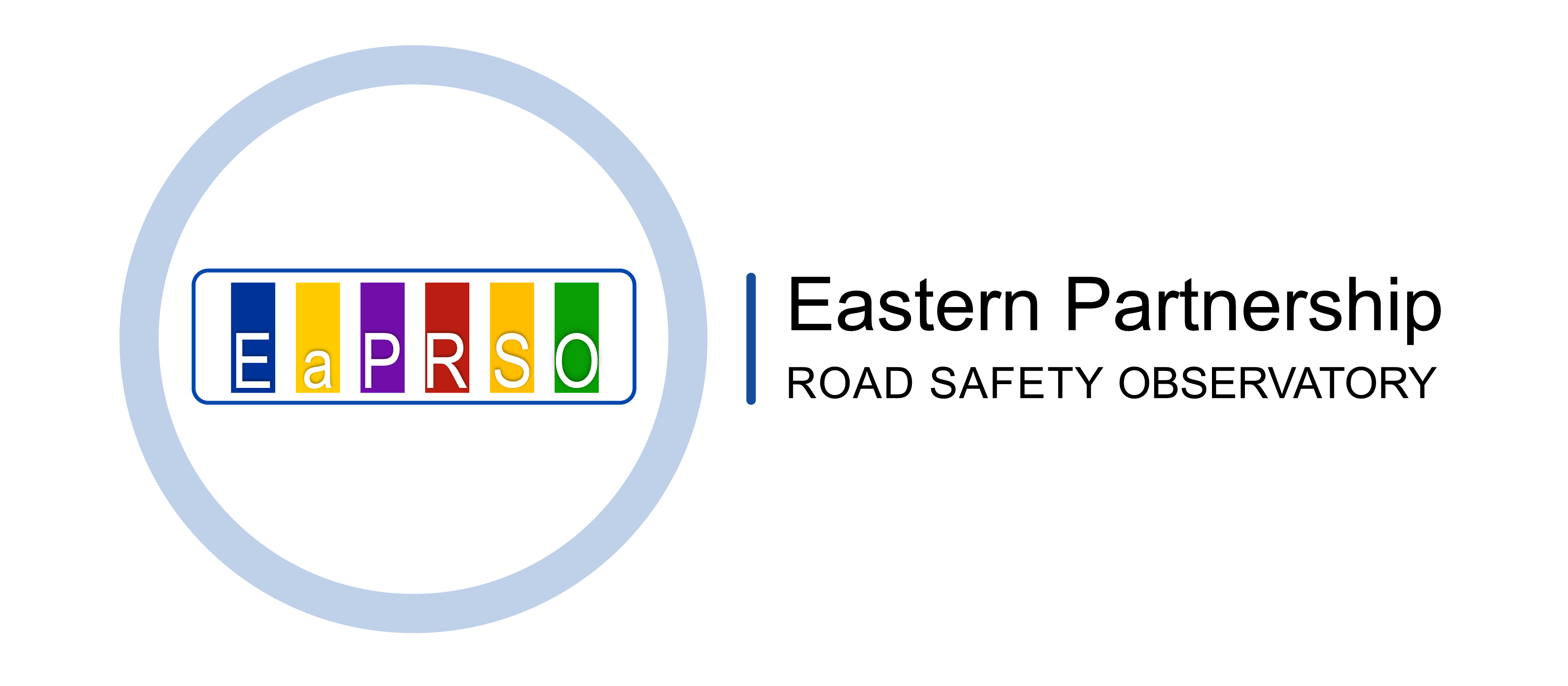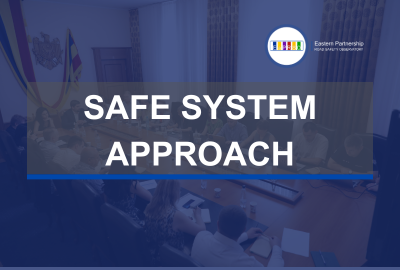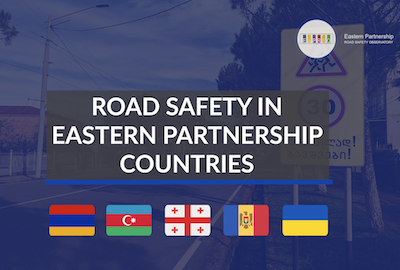
Speed management is a core component of the Global Plan for the UN Decade of Action for Road Safety 2021-2030 and essential to the effective implementation of the Safe System Approach. It includes a wide-ranging set of interventions from safe road design and engineering, to vehicle technologies, legislation, and enforcement.
The correlation between speed and road fatalities is widely recognised with speed significantly amplifying the risk of death and severe injury. Research published by the WHO has proven that a mere 1 km/h increase in average speed leads to a 3% rise in the likelihood of an injury-related crash and a 4 to 5% escalation in the risk of a fatal crash.
Speed is arguably the single biggest risk factor when it comes to road casualties. Small reductions in speed can have big gains. For example, reducing speeds from 40km/h to 30km/h can reduce the likelihood of a fatality by 30%.
In urban areas around school zones, hospitals, parks, and other areas where vulnerable road users and motorised traffic mix, therefore, the World Health Organisation and UN Road Safety Collaboration recommend a default speed limit of 30km/h to ensure maximum safety for vulnerable road users.
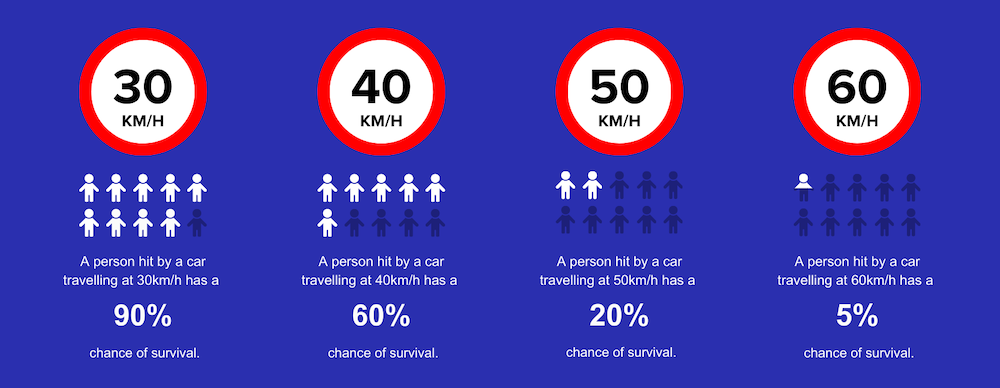
Source: World Health Organisation/ https://www.rbc.ru/rbcfreenews/60c016799a794729f91373a8
Across EaP member countries, urban speed limits far exceed this recommended level. Moreover, where it is available, country-level data shows excessive speed as a significant contributing factor in road traffic collisions. One country taking steps to address this is Moldova, where since 2022, road regulations have been amended to mandate 30km/h around schools, parks and historical centres.

Source: 2024 World Bank Road Safety Country Profiles for Armenia, Georgia and Moldova
Each EaP member country also maintains a high tolerance level for speeding, which further widens the gap between the actual enforceable speed limit and best practice recommended safe speeds.
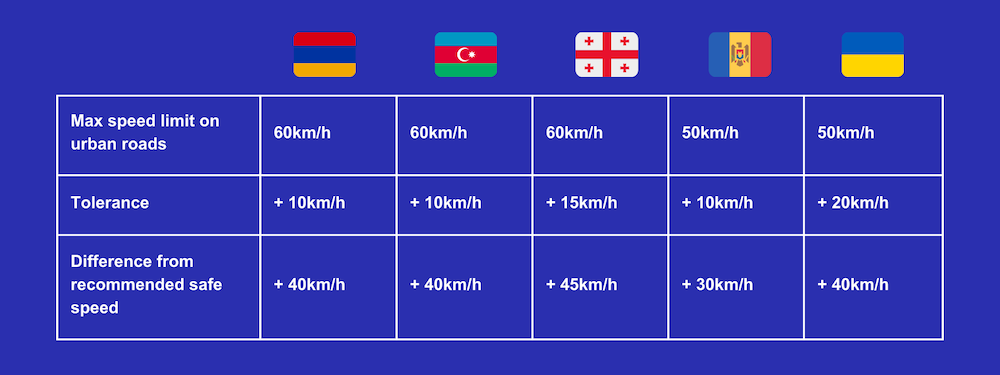
In all cases, these high tolerances are a hangover from earlier times when technology was less precise. However, with speed capture technology rapidly improving in accuracy and precision over recent years such high tolerance levels are increasingly unnecessary and only serve to undermine speed limits and encourage a culture of speeding. This is an area that needs to be urgently addressed if policy makers and legislators are to ensure speed limit reductions have the intended impact of reducing speed related road casualties. Georgia is already looking at this issue with support of the EaP RSO.
Case studies from around the world have proven that reducing speed limits can significantly reduce the number of collisions and road casualties.
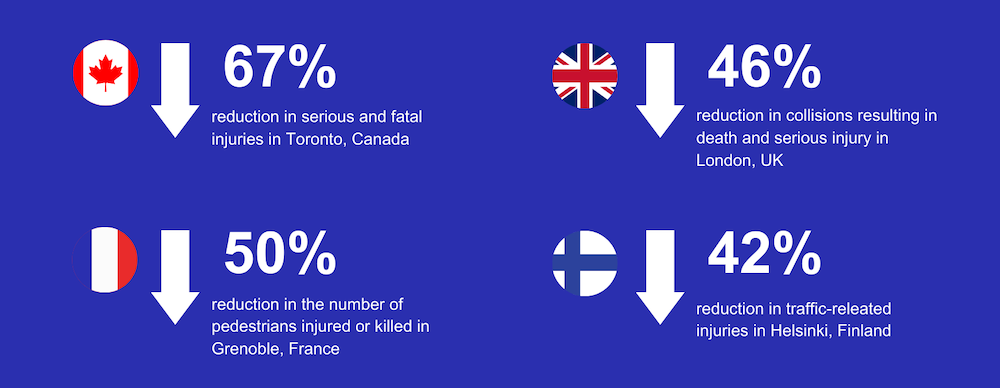
Source: Global Alliance of NGOs for Road Safety / https://www.roadsafetyngos.org/toolkit/priority-interventions/lower-speed-limits/
The recently published World Bank Road Safety Country Profiles for Armenia, Georgia and Moldova have used the Nilsson’s Power Model connecting speed and road trauma to calculate the potential decrease in fatal road crashes if recommended safe system speeds were enforced.[1] This estimated a potential five-times decrease across the region in fatal road crashes in both urban and residential areas, and a two-times decrease on motorways.[2]
Other benefits of speed reduction
There are also numerous additional benefits to reducing speed limits to 30km/h on urban roads. These includes reduced emissions, less noise pollution, and lower levels of congestion. 30 km/h zones are also a low cost way to facilitate and promote active travel such as walking and cycling, improving public health and reducing inequalities.
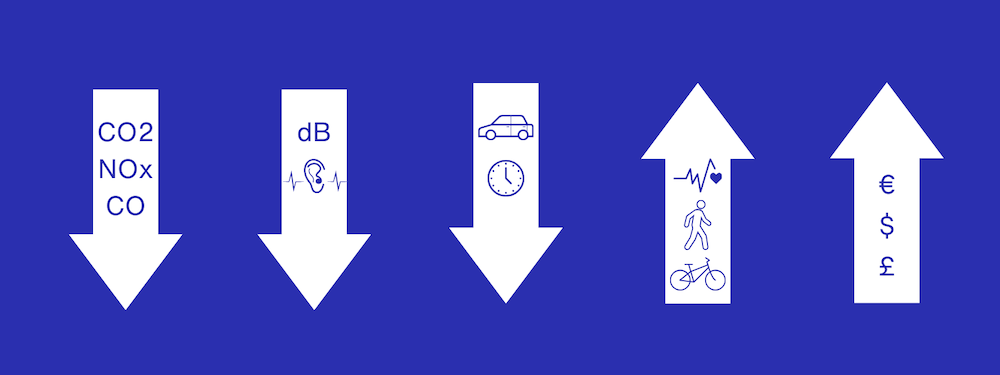
Reduced emissions
Evidence has found that cars travelling at 30km/h maintain a more constant speed when travelling in urban areas with a significant reduction in harsh breaking and fewer stop starts. Reducing speeds from 50km/h to 30km/h therefore has been found to result in large reductions in CO2 (about 15%), NOx (about 40%) and carbon monoxide (about 45%).[3]
Less noise pollution
Noise pollution is not often considered in relation to road safety but the number of vehicles in our cities, especially those moving at high speeds, can have serious harmful effects on mental health, sleep, and on children’s development. Research has found that reducing speed limits around schools to 30km/h reduces noise by 3 decibels. This is equivalent to removing 50% of vehicles from the road.[4]
Less congestion
30km/h streets can accommodate a larger number of vehicles travelling at a constant speed with reduced stopping distances required, thereby reducing congestion. The crash reduction benefits of lower speed limits also improve congestion by reducing the temporary disruptions caused by traffic crashes. Evidence shows that there is in fact little difference in the time it takes to travel the same distance at 30km/h than at 50km/h in urban areas.[5]
Through the EaP RSO, we will be taking a data-led approach to addressing issues of speed. We will use data to inform policy decisions, challenge misconceptions and show that 30km/h speed limits, when combined with effective speed enforcement and infrastructure measures, can have a remarkable impact on saving lives and improving liveability in our region’s cities.
For more information on speed management, download the Speed management: road safety manual for decision-makers and practitioners (Second edition), coordinated by the WHO and published by the Global Road Safety Partnership, International Federation of Red Cross and Red Crescent Societies, Geneva; 2023.
[1] M.H. Cameron, R. Elvik, 2010
[2] World Bank, Road Safety Regional Profile: Eastern Partnership Countries, 2021.
[3] Rakha H, van Aerde M, Ahn K, Trani A. Requirements for evaluation of environmental impacts of intelligent transportation systems using speed and acceleration data. Transp Res Rec. 2000;1738(1):56–67.
[4] Mitchell P. (2009). Speed and road traffic noise: the role that lower speeds could play in cutting noise from traffic. UK Noise Association
[5] Archer J, Fotheringham N, Symmons M, Corben B. (2008). The impact of lowered speed limits in urban and metropolitan areas. Victoria: Monash University Accident Research Center
